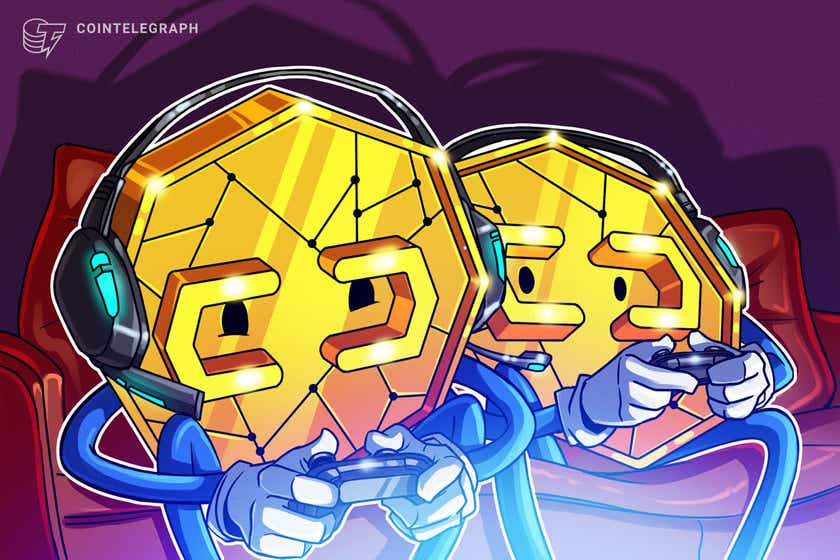All in on PoS Blockchains: An Overview of Crypto-Staking Networks
The debate over which consensus algorithm is right for blockchain is long overdue. While proof-of-work remains popular with Bitcoin (BTC), interest in proof-of-stake protocols has been picking up speed, especially with the planned shift of Ethereum to a PoS, Ethereum 2.0.
Which one is better, though, remains up for debate. For example, Ankit Bhatia, a co-founder and the CEO of Sapien, told Cointelegraph: “Proof-of-stake is simply more scalable because it eliminates the race to solve math problems and the need for computation to grow the pot.” According to Bhatia, PoS’s ability to make use of sharding makes it the better choice:
“Instead of reaching a consensus across every single machine in your network, you can get validation from a smaller, but still sizable, collection of nodes — way cheaper on equipment and energy and more sustainable for growing the network.”
Bhatia’s excitement about PoS is also shared by Jack O’Holleran, a co-founder and the CEO of Skale Labs, who told Cointelegraph that Ethereum’s shift to a PoS blockchain “will be greatly positive assuming the Ethereum community can figure out an elegant transition from ETH! To ETH2.0.”
Meanwhile, Sinjin David Jung, the managing director of IBMR.io, a blockchain tech startup, toes a different line. Although he identifies transaction speeds as an obvious advantage to PoS blockchains, he mentioned that “PoW will always be the superior stand-alone solution when it comes to establishing decentralization off the bat,” adding:
“PoS blockchains will have their success determined by the complexity of solving governance to scale to reach the same level of establishment shown by PoW.”
Interest in PoS networks has started to accumulate. Below is a list of some of the biggest PoS platforms in crypto and specific features that make them stand out:
EOS
Even though the EOS blockchain is privately owned, the platform was created to be a community-driven blockchain network. One of the elements that make the EOS blockchain scalable is the fact that it uses a delegated proof-of-stake protocol. A DPoS blockchain is one that uses a democratic voting process to boost security and achieve a decentralized governance structure. In a DPoS scenario, token holders get to vote for a select group of delegates to make decisions on their behalf.
Also, the platform uses a multithreading mechanism to help improve scalability. For instance, if a smart contract needs to be executed, there is no need to wait for confirmation if the network is clogged.
With multithreading, a single set of code — in this case, a smart contract — can be deployed by several processors at different stages. This makes it possible for a number of computers to contribute to the overall processing power of the network. Thanks to DPoS, decentralized applications on the EOS blockchain can reportedly handle over 1,000 transactions per second, while the current Ethereum blockchain can only achieve between 10 and 20 TPS.
Tezos
At the start of the project, the Tezos team managed to raise a whopping $232 million of funds through an initial coin offering, boasting one of the biggest ICOs at the time. The XTZ is the native token of the Tezos blockchain, and it is used in the creation of smart contracts on the platform. Unlike most PoS blockchains, Tezos goes a step further to offer a DPoS protocol that incentivizes users to participate in the development process of the platform.
Related: Tezos Has Renewed Hope in 2020, but the Comeback Kid Is Still Untested
For instance, if a developer proposes an upgrade, they can attach their wallet address with an invoice to that upgrade. Then the XTZ holders get to vote and determine whether those upgrades should be implemented. The developer is paid as soon as the upgrades are approved by stakeholders.
Also, through a rewarding process called Baking, users who stake their XTZ tokens for transaction validation not only qualify to be delegated on the network but are also rewarded with 16 XTZ for every block they validate.
Tron
Similar to Tezos, Tron is a blockchain platform that runs on a DPoS protocol. In May 2018, the Tron (TRX) cryptocurrency that first launched as an ERC-20 token on Ethereum’s blockchain moved to its dedicated blockchain with the goal of enabling high-speed transactions, as well as a free-for-all staking service.
With a DPoS, TRX holders can endorse delegates to validate blocks. However, unlike Tezos, Tron uses a system of 27 super representatives who create the blocks. Therefore, TRX holders can choose among the 27 validators as their representative.
The super validators are selected every six hours, and candidates with the most votes are awarded the positions. After validating blocks, the super validators get to share their block rewards with those who voted for them. Tron holders can also freeze their STEEM holdings and earn points that help reduce the costs of transactions on the platform.
Neo
Neo is one of the fastest-growing blockchain networks in the crypto space. Launched in 2014, Neo is commonly referred to as the “Chinese Ethereum” because it is a Chinese-based open-source blockchain seeking to digitize real-world assets.
Like Ethereum, Neo is a smart contract platform that supports an ecosystem of decentralized applications. However, NEO runs on a Delegated Byzantine Fault Tolerance 2.0 PoS blockchain that is modified to act as a government system with delegates and speakers.
Through Neo’s dBFT algorithm, NEO token holders are granted governance rights and can make decisions on the implementation of changes to the network, including the validation of transactions. NEO token holders are rewarded with GAS for staking their NEO. GAS is the sister cryptocurrency on the Neo network and is used to pay fees and on the network.
Dash
Dash (DASH) claims to be a cryptocurrency that improves Bitcoin. It operates through a blockchain network with a two-tier incentive known as the Masternode network. At its core, the Masternode network operates on a modified PoS algorithm with an instituted system of master nodes that simplify the block validation process.
The master nodes on the Dash blockchain have a starting stake of 1,000 DASH that acts as collateral. This enabled the master nodes to earn rewards while improving the scalability of transactions on the network. Essentially, unlike the Bitcoin network that requires all nodes to validate transactions, the Dash network, through the Masternode system, reduces the number of nodes required to approve transactions, thus improving the speed of the network.
Waves
For token creators looking for alternatives to prominent DApp platforms like Ethereum and Neo, Waves offers an opportunity to create custom tokens. The platform was launched in 2016, following a $16-million ICO campaign. Waves is a PoS cryptocurrency that powers the whole platform and also comprises a Web 3.0 development toolset and a DEX exchange. Its creator claims that the network can achieve upwards of 500 transactions per second.
Cosmos
The cosmos network white paper was first released in 2016 with the hope of creating an interoperable and scalable blockchain that makes it easy for developers to host any DApp with ease.
With a pluggable and modular design, the founders of Cosmos (ATOM) included a PoS consensus protocol that comes with validators and delegators. The delegators can delegate their stake with a validator of choice out of 100 validators.
Among the notable mechanisms of checks and balances used on the Cosmos network is the Slashing and Lockup periods. Simply put, slashing is when a locked up stake is destroyed as a result of undesirable behavior on the platform. Like most PoS blockchains, token holders delegating their stake to validators are rewarded based on the actions of the validators they pick. Annual rewards on the Cosmos blockchain range between 7% and 20%.
Qtum
Another open-source public blockchain that operates like Ethereum but on a PoS blockchain is Qtum. Thanks to its modified decentralized governance protocol, the Qtum blockchain does not require a hard fork to increase its block size. Instead, Qtum is built on a proof-of-stake version 3 that is an upgrade built for UTXO-based blockchains.
Thus, even though Qtum operates on a PoS protocol, security against malicious attempts to rewrite or reverse transactions is enabled through the UTXO model. Compared to Ethereum’s proposed Casper model (a self-regulatory system), Qtum’s combination of the UTXO model plus a PoSv3 consensus protocol makes it significantly more expensive for bad actors to hijack the network.
VeChain
VeChain is famous for its application of blockchain technology in the supply chain industry. It is a public blockchain with an ecosystem that attempts to solve real-world problems. Since its launch, the Singapore-based platform has established itself as a pioneer in blockchain adoption with a list of partnerships including PriceWaterhouseCoopers, BMW Group and Deloitte, to mention a few.
Although the platform has had controversies, such as the incidence of stolen VeChain (VET) tokens, the company behind the project appears to have dealt with the issues. VeChain uses a proof-of-authority protocol — which is essentially a PoS but with a different model whereby a validator serves as a stake.
Therefore a PoA is a modified PoS in that there is a central party — The VeChain Foundation — that validates transactions instead of having anonymous block producers. With the PoA model, VeChain claims that its blockchain is capable of faster low-cost transactions, as every validating node is handpicked by the central party.
With an ROI on token staking of 2% and above, VET holders get rewarded with a token called VTHO, which is used to fuel transactions on the VeChain blockchain.
Upcoming Ethereum 2.0
Although the long-awaited launch of Ethereum 2.0 has dragged its feet, Vitalik Buterin has confirmed that its release “will come online this year.” In addition, a lead developer working on the launch of Ethereum 2.0 has since suggested June 2020 to be the target launch date.
According to Buterin, the first iteration of Ethereum 2.0 will launch on an independent PoS network, then sharding will be enabled in Phase 1, and eventually, all shards will be consolidated at the final stage. According to reports, the upcoming Ethereum 2.0 will enable Ether (ETH) holders to pledge their coins to protect and validate the network.
Bhatia believes that the shift to Ethereum 2.0 will “drastically enhance the accessibility of the network,” adding: “No longer will validators need massive GPUs to mine blocks; instead, any individual with 32 ETH will be able to stake and profit.” In his view, other computational improvements such as “optimistic rollups” sharding and Ethereum-flavored WebAssembly, or eWASM, will improve the efficiency and scalability of the Ethereum blockchain.
The future of PoS blockchains
With the eagerly awaited shift of Ethereum’s blockchain from a PoW consensus protocol to a PoS model, experts in the crypto world expect the interest in PoS, as well as in ETH, to increase.
Related: Ethereum 2.0 Staking Upgrade Can Trigger ETH Price Rally
However, despite the optimism around PoS blockchains, Bhatia shared his concerns about the dangers of PoS protocols. He is also worried about low liquidity and whales being the biggest risks to PoS blockchains. He identified the fact that “people with vast reserves of the given asset can wield great power,” thus easily dominate “the ecosystem and write an unofficial rulebook” — as was the case with Steemit. Justin Sun, the founder of Tron, successfully executed a takeover of the Steem blockchain by leveraging tokens in his control as well as those held by customers in exchanges.
However, O’Holleran believes that the “risks of PoS blockchains are greatly over-exaggerated.” In his view, the only disadvantage that comes with PoS networks is that “we don’t yet have a decade of proof under our belt” to prove whether they work. He added: “With each year, PoS will grow in reputation and use. Concurrently, the networks will become more stable, more performant and more secure.”









